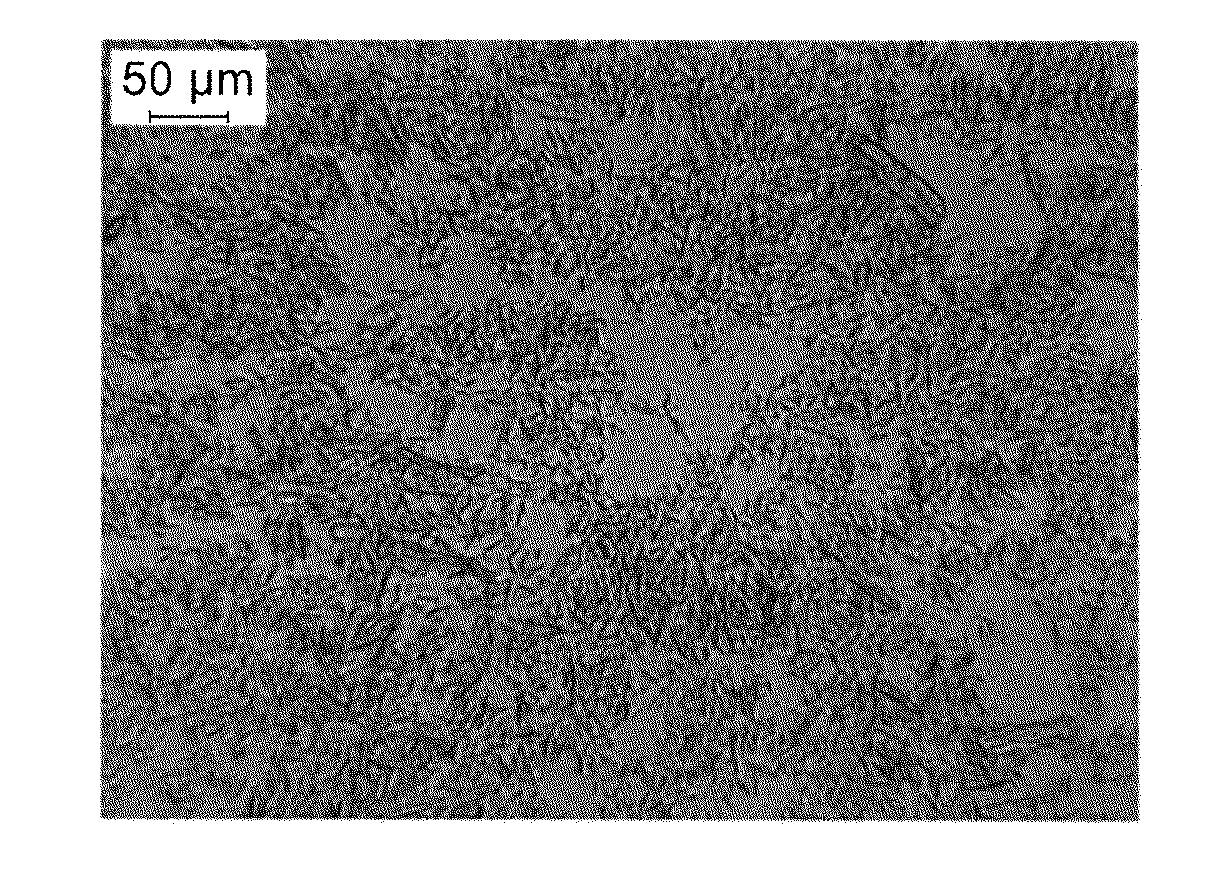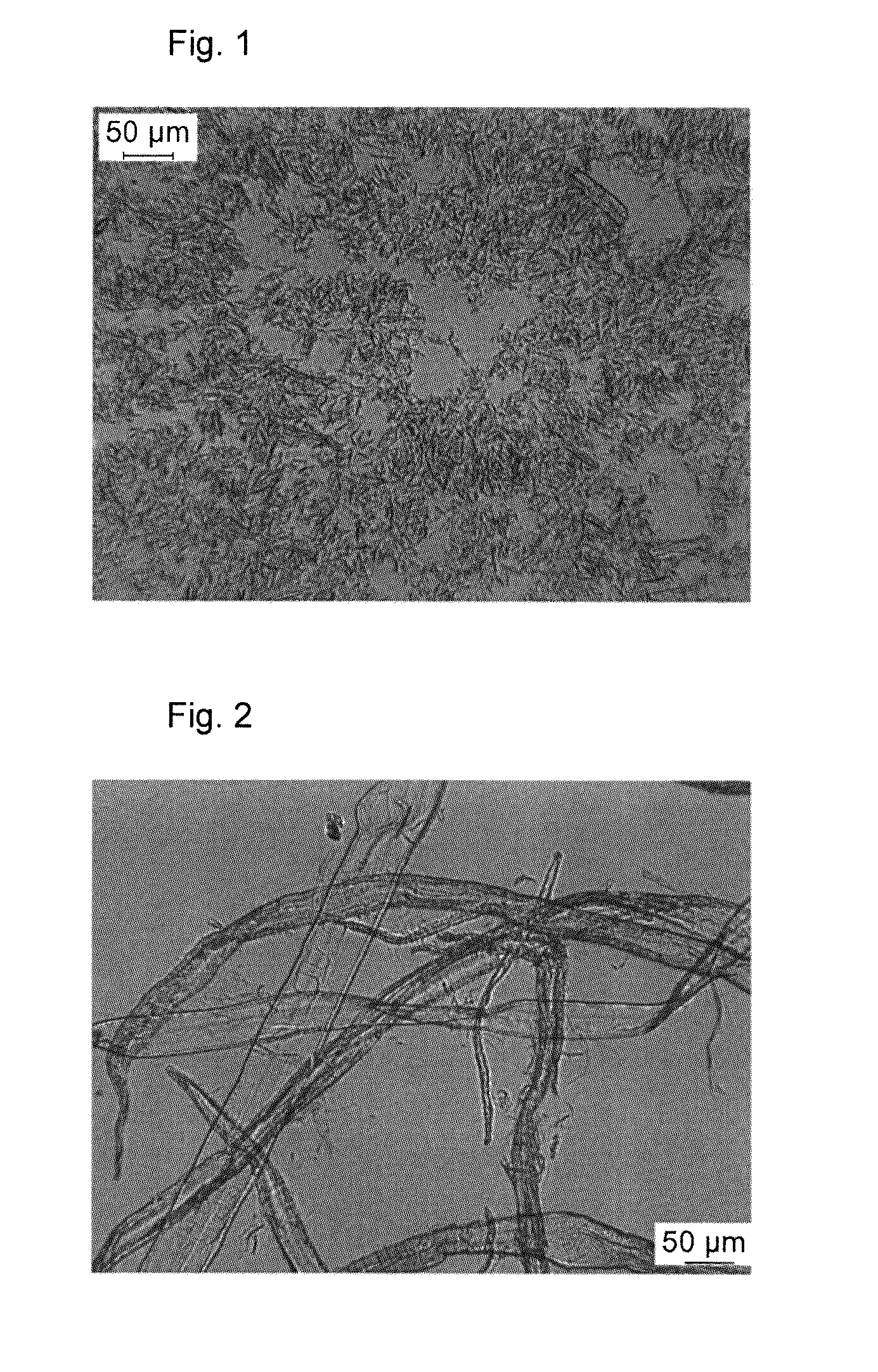Process for the production of microfibrillated cellulose and produced microfibrillated cellulose
- Summary
- Abstract
- Description
- Claims
- Application Information
AI Technical Summary
Benefits of technology
Problems solved by technology
Method used
Image
Examples
example
[0047]Pine kraft pulp was treated with the combined mechanical and enzymatic treatment with endoglucanase rich enzyme with an activity of 80 nkat / g. The pulp had a consistency of 20 wt % and it was treated at pH5 at a temperature of 50° C.±3° C. during 3 hours. The pulp was thereafter studied with microscope. As a reference, the same pulp was first treated mechanically for 5 hours at a pulp consistency of 20 wt % followed by an enzymatic treatment at a pulp consistency of 5 wt % during 3 hours using the same enzyme, dosage, pH and temperature as in the combined treatment.
[0048]The results can be seen from FIG. 1 and FIG. 2. FIG. 1 shows combined treatment according to the invention and FIG. 2 shows a sequential treatment, i.e. first mechanical treatment followed by enzymatic treatment.
[0049]From the figures it can clearly be seen that the fibers has disintegrated when the fibers are treated according to the invention. Consequently, the process according to the invention is more effi...
PUM
| Property | Measurement | Unit |
|---|---|---|
| Temperature | aaaaa | aaaaa |
| Percent by mass | aaaaa | aaaaa |
| Percent by mass | aaaaa | aaaaa |
Abstract
Description
Claims
Application Information
 Login to View More
Login to View More - R&D
- Intellectual Property
- Life Sciences
- Materials
- Tech Scout
- Unparalleled Data Quality
- Higher Quality Content
- 60% Fewer Hallucinations
Browse by: Latest US Patents, China's latest patents, Technical Efficacy Thesaurus, Application Domain, Technology Topic, Popular Technical Reports.
© 2025 PatSnap. All rights reserved.Legal|Privacy policy|Modern Slavery Act Transparency Statement|Sitemap|About US| Contact US: help@patsnap.com


